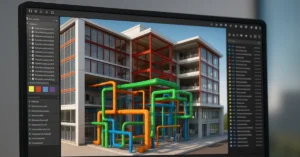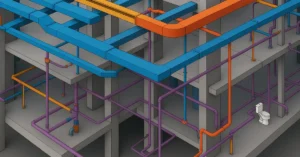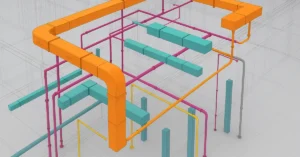A Bold Look at Barcelona’s Most Daring Brutalist Architecture
Barcelona is globally admired for its intricate Gothic cathedrals, colorful Art Nouveau facades, and the whimsical works of Antoni Gaudí. But beneath the layers of ornate design lies a different architectural narrative—one carved from concrete, defined by stark geometric lines and unapologetic functionality. This is the story of Brutalist architecture in Barcelona. Though often overshadowed by its more flamboyant neighbors, the brutalist buildings in Barcelona contribute an honest, raw expression to the city’s urban fabric. In this blog, we unveil the bold beauty, the controversies, and the cultural relevance of these architectural outliers.
What is Brutalism and Why is it Controversial?
Brutalism, derived from the French term “béton brut” meaning raw concrete, emerged post-World War II as an architectural response to social need, economic limitation, and modernist idealism. It emphasized exposed structural materials, functional form, and minimal decoration.
The style quickly became polarizing: admired by some for its honesty and loathed by others for its perceived coldness. In Barcelona, a city celebrated for its curves and color, Brutalism stands in stark contrast. This contrast is exactly what makes Barcelona’s Brutalist structures so fascinating—they are a rebellion against decorative norms, offering a raw, honest vision of architecture.
The Origins of Brutalism in Barcelona
In the 1960s and 70s, Spain experienced waves of modernization, especially in urban centers like Barcelona. Architects looked for new ways to house a growing population, host administrative functions, and reflect the ideals of a modern society. The Brutalist approach, with its cost-effective materials and quick construction methods, became an attractive option.
Several architects, both Spanish and international, began experimenting with this style, embedding their visions into the evolving skyline of Barcelona.
Notable Brutalist Buildings in Barcelona
1. Walden 7
Architect: Ricardo Bofill
Location: Sant Just Desvern (Greater Barcelona Area)
Year Completed: 1975
Perhaps the most iconic Brutalist building near Barcelona, Walden 7 challenges every preconception about concrete architecture. Designed by Ricardo Bofill, this massive apartment complex comprises 18 towers joined in a labyrinthine arrangement. The result is a fortress-like residential unit with bold red concrete, internal courtyards, and sky bridges.
Despite its fortress-like exterior, Walden 7 integrates natural light, communal areas, and bold color, pushing Brutalism beyond mere utility. Bofill saw Brutalism as an opportunity to reimagine collective living, not just as a necessity but as an adventure.
2. Mercat de Santa Caterina Parking Structure
Architect: EMBT (Enric Miralles & Benedetta Tagliabue)
Year Completed: 1997
Though not conventionally recognized as Brutalist, the underlying parking structure beneath the colorful roof of the Santa Caterina Market features typical Brutalist elements—bare concrete, functional form, and structural honesty. The layering of new and old, expressive roof against heavy concrete substructure, creates a unique hybrid that speaks to the adaptable nature of Brutalism in Barcelona.
3. Escola Sant Gregori
Architect: Martorell, Bohigas & Mackay
Location: Sant Gervasi
Year Completed: 1970s
This school is a study in functionalist Brutalism, with heavy use of concrete and a minimalistic approach to form. Large cantilevers, sun-blocking fins, and repetitive modular elements characterize this structure. It reflects the social aspirations of education during Spain’s late Francoist period—practical, modern, and accessible.
4. UPC Nexus II (Universitat Politècnica de Catalunya)
Location: Diagonal Campus, Barcelona
Architect: Enric Tous and Josep Maria Fargas
Year Completed: 1970s
Located in the heart of the university campus, this academic building embodies the essence of Brutalist design: an exposed concrete façade, robust structural elements, and functionality-driven interiors. It represents a broader trend in Spain where educational institutions adopted Brutalist architecture to symbolize progress and intellectual rigor.
5. Edifici Planeta
Architect: MBM Arquitectes (Josep Martorell, Oriol Bohigas, David Mackay)
Location: Carrer de Còrsega, Eixample
Year Completed: 1970s
This office building breaks from traditional Eixample aesthetics with its bold massing and exposed material palette. Angular balconies, recessed windows, and concrete grilles demonstrate a fusion of brutalist principles with Barcelona’s urban rhythm. It represents the city’s experiment with blending modernism and utilitarianism.
The Social and Political Context of Barcelona’s Brutalism
Barcelona’s Brutalist buildings weren’t just architectural statements—they were born of a specific social and political context. The late Franco period and the subsequent democratic transition opened opportunities for expressive, radical design that broke with the ornate past.
In this way, Brutalism became not just a style but a symbol of change, pragmatism, and social ambition. Architects used raw concrete to tell new stories about civic pride, education, and communal living. While some structures aged poorly, others have been rehabilitated, becoming cultural landmarks.
Preservation and Reappraisal of Brutalist Buildings
In recent years, there has been a resurgence of interest in Brutalism worldwide, and Barcelona is no exception. Organizations and architecture lovers have started campaigns to preserve and document Brutalist sites across the city.
Walden 7, for instance, was once neglected but is now hailed as a masterpiece, attracting visitors, photographers, and urbanists alike. Efforts are also underway to catalogue lesser-known Brutalist structures before they are modified or demolished.
The reappraisal also ties into broader urban themes: sustainability, adaptive reuse, and urban memory. By preserving Brutalist buildings, Barcelona recognizes a vital chapter of its 20th-century evolution.
Brutalism’s Relationship with Barcelona’s Architectural Identity
Barcelona is synonymous with vibrant architecture. From the medieval quarter to Gaudí’s whimsical creations and the slick lines of contemporary museums, the city is a mosaic of styles. Brutalism adds another, often overlooked, layer to this rich visual tapestry.
Unlike its decorative neighbors, Brutalist buildings don’t beg to be liked. They demand attention. Their presence challenges us to think about utility, materiality, and social function. And in doing so, they fit perfectly into Barcelona’s tradition of architectural boldness.
Planning a Brutalist Architecture Tour in Barcelona
If you’re planning to explore Barcelona’s Brutalist gems, consider building your own walking tour:
- Start at UPC Diagonal Campus for academic Brutalism.
- Visit Escola Sant Gregori for institutional designs in residential neighborhoods.
- Head to Eixample to see Edifici Planeta and its urban-integration experimentation.
- End with a day trip to Sant Just Desvern to see Walden 7, arguably the crown jewel of Catalan Brutalism.
Don’t forget to bring a camera—these structures offer stunning shadows, textures, and perspectives, especially during golden hour.
Final Thoughts
The brutalist buildings in Barcelona may not capture postcards like La Sagrada Familia or Park Güell, but they are essential to understanding the city’s full architectural narrative. These concrete giants tell stories of political change, social ambition, and architectural experimentation.
They might be controversial, but they are undeniably powerful. Whether you’re a passionate architect, a traveler, or someone with an appreciation for the offbeat, Barcelona’s Brutalist structures are worth a closer look. Through preservation, education, and thoughtful tourism, we can ensure that these bold expressions continue to shape and inspire for decades to come.
If you’re interested in learning more about architecture firms in Europe, check out this comprehensive list of the top 50 firms compiled by Archgyan. From innovative startups to long-established industry leaders, this list has it all. Take a look and discover some of the most inspiring and influential architecture firms in Europe today.
If you’re interested in architecture and want to learn more about this amazing field, subscribe to our podcast on youtube
For more SketchUp tutorials, head to https://www.sketchupguru.com










